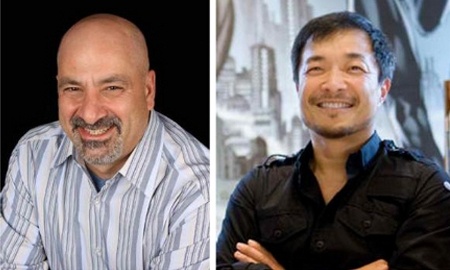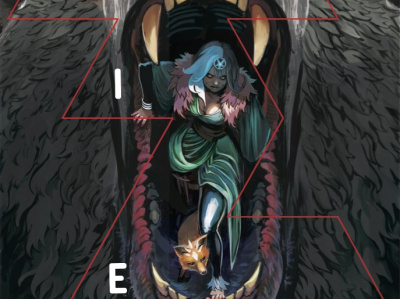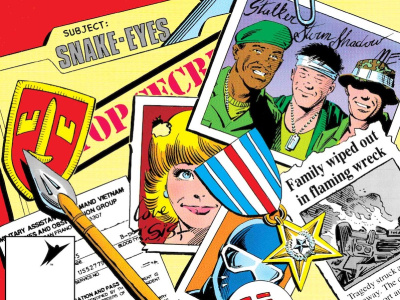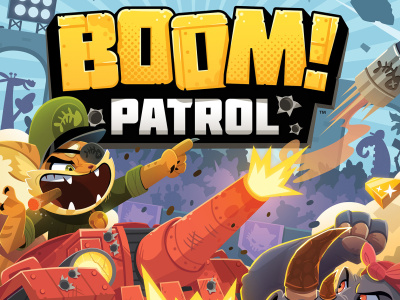We sat down with DC Co-Publishers Dan Didio and Jim Lee at New York Comic Con to catch up on DC and the fast-moving market. In Part 1, they admit "We lost sight of our core audience," and they tell us what they’re planning to do about it. In Part 2, the co-pubs reveal their plans to reduce variants, explain the surge in sales of classic DC graphic novels, and talk about the packaging for Dark Knight 3, the digital market, and DC Super Hero Girls.
Have you seen any changes in the market for print since we spoke last summer (see “ICV2 Interview: Jim Lee and Dan Didio, Part 1”)?
Lee: We went through Convergence, and through "DC You," which was really the first step toward this larger plan to diversify and be more inclusive with our line. I think one of the missteps, if I can call it a misstep, in launching that is that we lost sight of our core audience. There’s still a very large audience of readers that want continuity-driven, action-adventure stories featuring the classic look and feel of the superheroes.
Not everything has to feel more indie or different. In fact, just throwing those attributes onto a title doesn’t necessarily guarantee you’ll find this new, emerging audience that everyone’s talking about. At the end of the day, they’re just as discerning as any other fan. It has to be good on top of being all these other things like diverse and inclusive and independent-feeling.
We’re really focusing on how we keep the core of our line exciting, keep the continuity tight, get the creators to collaborate more with one another so we can have a shared universe. Not that they all tie into one another, but that it feels like you’re in one universe as opposed to lots of different universes. And also have our cake and eat it too in addressing this new phenomenon of people wanting more creator-driven, more esoteric (if I can say) flavors to characters.
When you look at something like Batgirl, it’s very different tonality-wise from what preceded it. It’s not just the costume or art, but it’s also the kinds of stories that she’s in. What we’re finding is that the consumer buying patterns of those fans are different from what we’re used to. They’re not necessarily going into shops every week; they might be more likely to wait for the trade. We’re getting great collected edition sales on books like Batgirl and Gotham Academy, so it’s almost more like an early Vertigo model that you’re seeing emerge. The periodical marketplace is really interesting, so we’re reacting to what’s changing. We have some really exciting plans for 2016 which will continue to build upon the learnings and some of the things that we experimented with this year.
Sounds like you’re acknowledging what retailers are telling us, which is that response to "DC You" has not been what they’d hoped. What are you doing differently to address the concerns for retailers who are having trouble selling those titles?
Didio: Jim covered a lot of if right there. The reality is that DC was willing to cast a wide net to see where patterns were developing with the new audience. We put out humor, we put out a lot of diversity, but you find that diversity in itself doesn’t sell; it’s a way to reach different people, but the quality of the material is really what they’re going to gravitate to, and the tonality of the material, and what types of stories they like and what their expectations are for comics. With the successes and the books that did not work as well we’re able to figure out a couple of paths and that’s what Jim was alluding to, to focus our line and focus our selling of the line in a way that allows people to find the types of books that interest them the most.
People talk about event-driven comics. It’s not about doing event-driven comics and driving events, but it’s clear that the one thing an event gives you is a sense of urgency and priority to the books that are tied to it. It gives a sense of focus. When you’re in a marketplace that they put out 400 titles on a monthly basis it can be overwhelming for a new fan, or even an existing fan, to walk in and decide what books they should buy and which ones they should wait for trade, and which ones they should ignore completely.
We need to be better at finding ways to identify an audience and direct them to the proper product. We count on the retailers to do that, but we ourselves have to be able to package our material and present our material in ways that it has a sense of clarity, so that when a new fan walks in the door and they know what type of book they want they go to the right section of the stands and get the books that are most interesting to them.
We’ve also seen a bifurcation of the audience. There is a portion of the audience that feels slightly disenfranchised because their expectation of storytelling isn’t being met, and our goal is make sure that we meet all expectations of all the fans. That doesn’t mean creating one book--a one-size-fits all--it’s using the multiple books, multiple styles of books we do and really focus them to particular fan groups and particular audiences so they feel they’re getting the experience they want from our product.
When should retailers and fans expect to see changes to the line reflecting strategies to reinvigorate the core audience?
Didio: It’s a slow roll. With the October launches of Batman and Robin Eternal, Titan’s Hunt and Lois and Clark you’ll see us starting to weave in our history. I think it’s important for us not just to look at what we’re telling in the future. One of the aspects of our storytelling that we lost, and we’ve heard this from the fans, is the generational aspect of the DC universe, the sense of history of what it was. We had a very hard start with the "New 52" and nobody had a history more than five years past (as we used our line in the sand). A lot of people felt that the history of the characters, the generational aspect of who they were was lost because of that. We’re going to great lengths to address that issue.
What I loved about the first issue of Lois and Clark is that in the first six pages it tied in aspects of Convergence, aspects of Crisis on Infinite Earths and the launch of the "New 52" all in one book. Once you pull those things together it shows that we’re acknowledging we have a past, and there’s a past history that our characters are very intricately involved in, and it helped formulate and create the stories that are coming forward.
What we’re doing now is try to pay as much service as we can to our past history but find a way to incorporate it into our future storytelling so we’re telling stories forwards and backwards, enriching the DC universe without just retelling old stories or repeating ourselves.
Are you going to do any marketing to reactivate some of the fans that may have lapsed this year?
Didio: What I’m trying to do now is slow build. What we don’t want to do is go out there and stand on top of the hill beating a loud drum, ‘come look at us,’ at this moment. I’d like the quality of the material to sell itself.
It goes back to the variant program a little bit. Right now we’re leaning on variant covers to sell our books and now it’s time to go back to leaning on quality of story to sell our books. We have some great stories coming together right now.
What you’ll see over the next couple of months is us wrapping up a couple of the story lines that are running currently. The #50 issues for a number of our books are coming together from the start of the "New 52." That feels special and we want to make it even more special. After that you’re going to start to see the universe weaving together in ways that will excite the older fans, but also excite the newer fans too as they start to see what the make-up of the DC universe is.
I’ve said this before, and I’ll say it here: what’s intriguing to me is that part of the great success of the movies and television series is the fact that they are building cohesive universes. The movie has its universe and the TV shows have their universe, and people are buying into that and enjoying that aspect of it. Well, the shared universe started with the comics themselves and for us to walk away from our core strength, and for DC Comics, shared universe is our core strength. It’s what we have above so many more of these other companies that are out there. It’s what we are, so we’re going to embrace what we are again.
The key is to do a shared universe, not a shared story. Show that everybody exists in the same space but not have to tell all the same story where everybody is locked together. That’s where you get the richest feel of the world, and the most expansive feel of the world, and that’s where the best stories come from and it feels like all of these characters are existing in the same environment.
Click here for Part 2.
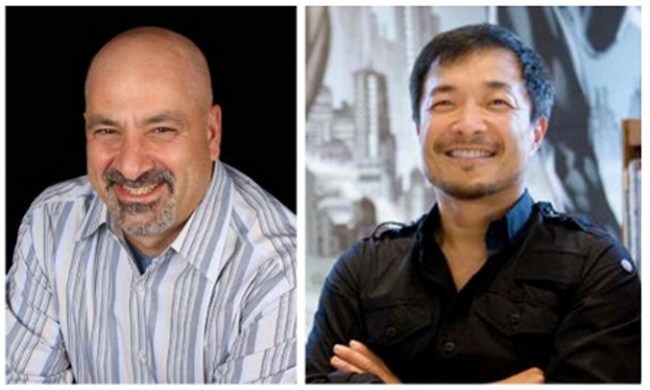
Losing Sight of the Core Audience, and Fixing It
Posted by ICv2 on October 22, 2015 @ 4:17 am CT
MORE COMICS
New 'Die' Story Out in November, Alongside 'Die Quickstart RPG Guide'
August 11, 2025
The Die: Loaded #1 will be released in November 2025, the same month as The Die RPG Quickstart Game Guide.
'Hama Files Editions' Will Include a Letter from the Creator
August 11, 2025
Each issue of the Hama Files Editions will include a letter from Hama with background information about the comic.
MORE NEWS
New Tank Battle Board Game by Smirk & Dagger
August 11, 2025
Smirk & Dagger will release Boom Patrol, a new tank battle board game, into retail.
New Weird Swashbuckling RPG
August 11, 2025
Magpie Games will release Rapscallion, a new weird swashbuckling RPG, into retail.



